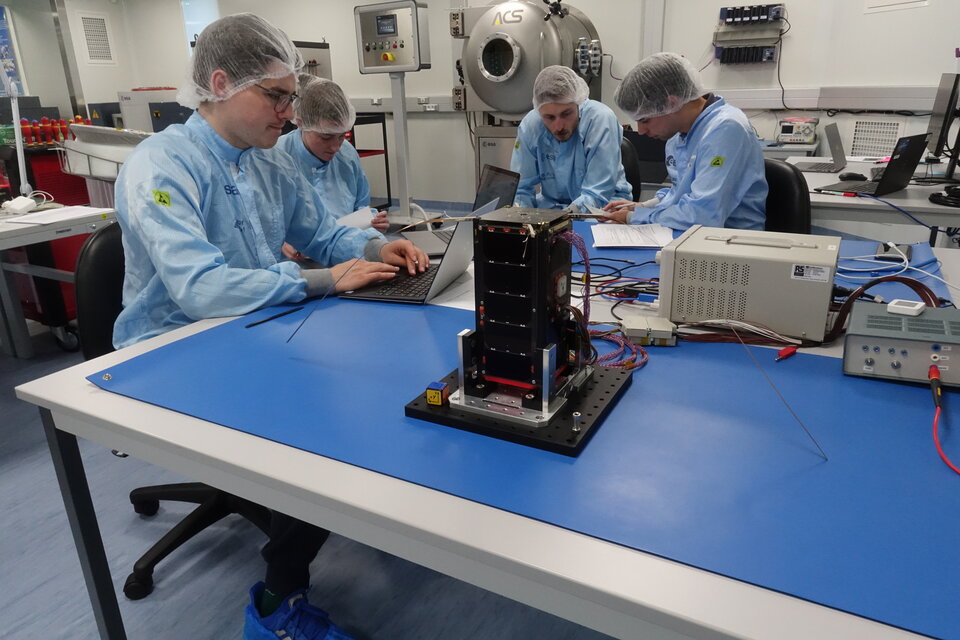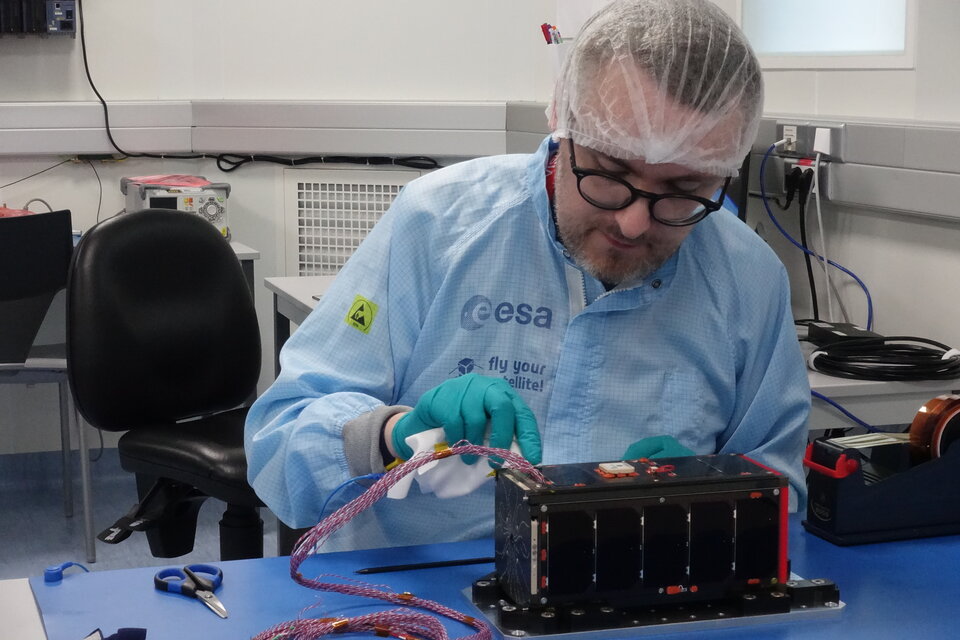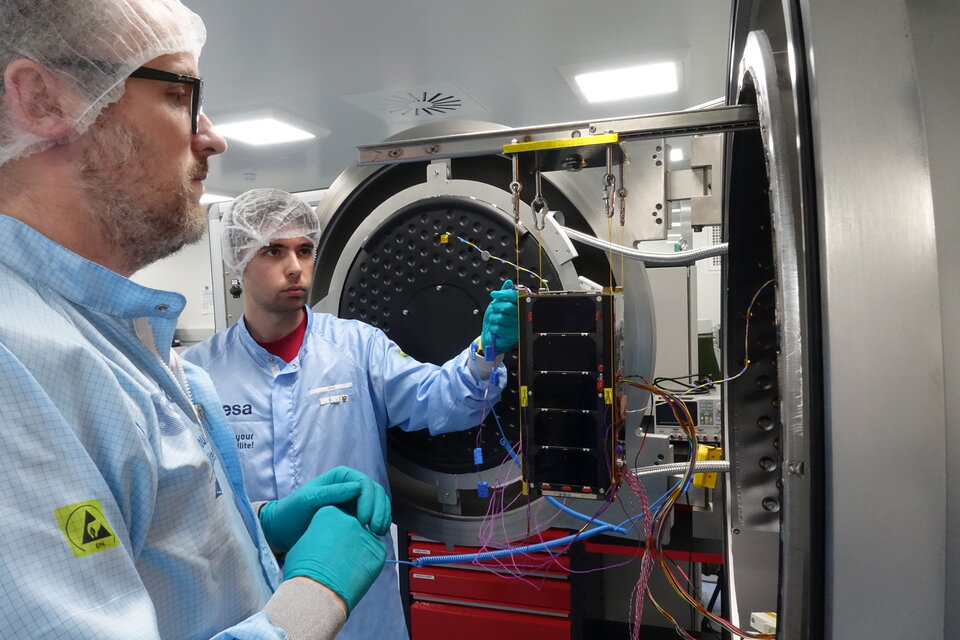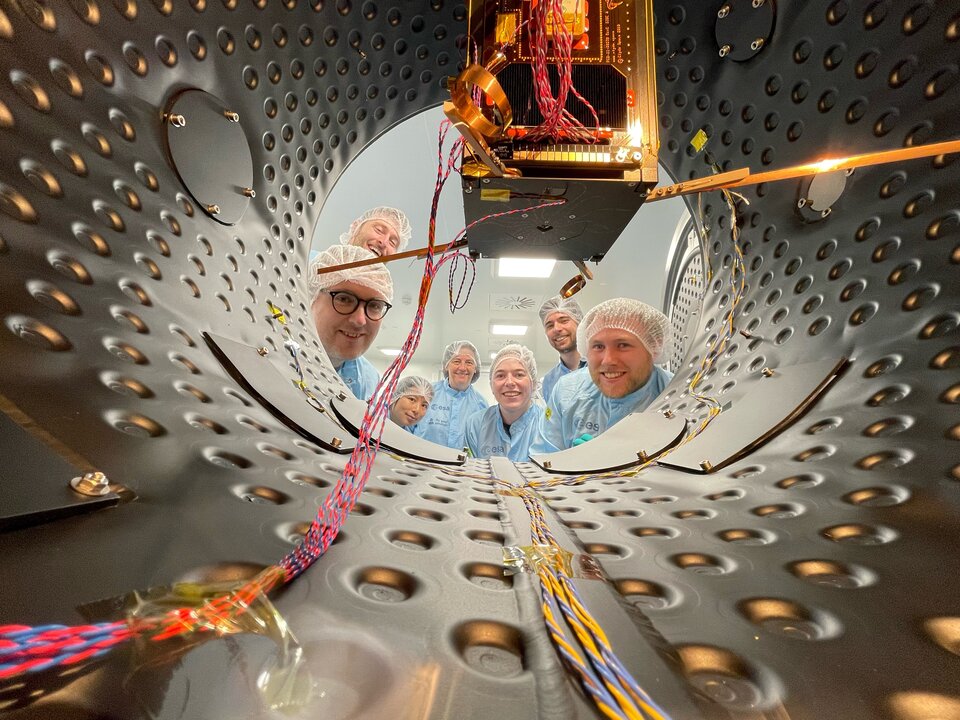Ireland’s first satellite undergoes environmental test campaign
In brief
The EIRSAT-1 student team from University College Dublin, Ireland, recently visited the CubeSat Support Facility in ESEC-Galaxia, Belgium. Their mission: complete a series of stringent environmental tests to ensure their CubeSat can withstand the rigours of a rocket launch, and eventual operation in space!
In-depth

EIRSAT-1 itself is a 2-unit CubeSat participating in the second cycle of ESA’s Fly Your Satellite! Programme. It has a number of mission objectives, including studying gamma-ray bursts; analysing the performance of novel surface treatments; and determining the potential of an attitude control algorithm as an alternative to standard Attitude Determination and Control methods. EIRSAT-1 is also noteworthy as being Ireland’s first ever satellite.
Following a successful assembly and integration, the team ran functionality tests on the satellite at their home university in preparation for this environmental test campaign at the CubeSat Support Facility. Running from 25 July to 19 August 2022, the CubeSat was exposed to conditions representing space: one week of vibration, and then three weeks of extreme hot and cold temperatures. Said one of the attending students, "After 5 years of design, development, and testing it is very satisfying to see the assembled flight model going through environmental testing, the final big step towards launch."

The first week of testing involved the EIRSAT-1 flight model being placed on an electrodynamic shaker system. This mimicked the intense vibrations that the satellite will experience during launch. This was followed by three weeks inside a thermal vacuum chamber. A “bake-out” raised temperatures to 58˚C for several days on end to ensure outgassing of volatile compounds. Then came repeated heating and cooling to temperatures that the satellite will experience in space. The test chamber’s window was closed all this time, so the students needed to run remote functionality checks to ensure their satellite was in good health; just as they will need to do after launch.

"This was a brilliant opportunity for the team to verify EIRSAT-1 will survive the vibrations experienced during launch and will function in the harsh condition of space with the facilities available at the ESA CubeSat Support Facility,” explained one of the students. “It was a huge learning experience for all the team in designing the vibration and thermal tests and then performing them with the support and guidance of ESA experts."
Now back at the University College Dublin, the students are conducting a final functional test to ensure EIRSAT-1 is still fully operational after its trials, in addition to investigating some issues that the tests raised. They are also busy preparing for their Flight Acceptance Review, in which they must prove that their CubeSat has been fully tested, meets all requirements, and is of launch standard. If successful, the EIRSAT-1 team will be awarded their “ticket to orbit”, granting them acceptance for launch!
To keep up-to-date with Fly Your Satellite! developments, please visit our website.



